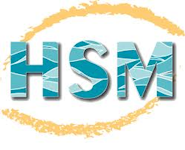Institute for Earth Observation - Projects - 4DMED-Hydrology
4DMED-Hydrology
4DMED-Hydrology
- Deutsch
- English
- Italiano
- Project duration: -
- Project status: finished
- Institutes: Institute for Earth Observation, Center for Sensing Solutions
Project funded by
The Mediterranean region (MR) includes the largest semi-enclosed sea on Earth and is an area of extraordinary biodiversity value as well as intense human activities. MR has a distinctive character as it is in a transition zone between temperate, cold mild-latitudes and the tropics with several large-scale atmospheric oscillations/teleconnection patterns. This determines a high temporal variability of climate which causes periods of excess water with widespread floods followed by drought episodes and heatwaves, making the region very vulnerable to hydrological extremes. Consequently, resolving the water cycle over the MR is essential for protecting people and ensuring water and food security. Previous efforts to resolve the water cycle in the MR have used model outputs or reanalysis and in situ data. In this context, the European Space Agency (ESA) has supported significant scientific efforts to advance the way we can observe and characterize the Mediterranean water cycle from satellites with Watchful, Irrigation+, and WACMOS-Med projects. However, limitations in resolution in space and time, accuracy, uncertainty definition and inter-product consistency hinder the use of the products for operational application in several domains (e.g., agriculture, water resource management, hydro-climatic extremes and geo-hazards) over the MR. The new ESA project “4DMED-Hydrology” aims at developing a high-resolution and consistent reconstruction of the Mediterranean terrestrial water cycle by using the latest developments of Earth Observation (EO) data as those derived from the ESA-Copernicus missions. By exploiting previous ESA initiatives, 4DMED-Hydrology intends 1) to demonstrate how this EO capacity can help to describe the interactions between complex hydrological processes and anthropogenic pressure; 2) to exploit synergies among EO data to retrieve different water cycle components (i.e., precipitation, soil moisture, evaporation, runoff, river discharge) in order to represent accurately our environment and to feed advanced decision support systems in a changing climate for a more resilient society. The project is organized in four consequent steps: 1) developing high-resolution (1 km, daily, 2015–2021) EO-based datasets of the different components of the water cycle by capitalizing on Sentinel missions and previous ESA projects; 2) merging these datasets to close land water budget, and providing a consistent high-quality consistent dataset; 3) addressing major knowledge gaps in water cycle sciences enhancing our understanding of the complex processes governing the role of the MR in the Earth and climate system with the water cycle; 4) transferring new science results into solutions for society through four user-oriented case studies focusing on flood and landslide hazard, drought and water resources management by involving operational agencies, public institutions, and economic operators in the MR. 4DMED-Hydrology will focus on four test areas, including the Po River basin in Italy, the Ebro River basin in Spain, the Hérault River basin in France, and the Medjerda River basin in Tunisia, which represent climates, topographic complexity, land use, human activities, and hydrometeorological hazards of the MR. The developed products will be extended to the entire region. The resulting EO-based products will be accessible by an Open Science catalog hosted and operated by ESA.
1. Contributing to develop the next generation of geo-information products and observation systems for the MR to better characterise complex processes and land-atmosphere interactions and advance towards novel high-resolution data models that may describe not only natural processes but also human activities impacting the MR. 2. Advancing EO capabilities towards a quantitative, accurate, and routinary estimation of water cycle information products in the Mediterranean environment, by means of multi-mission satellite EO approaches, especially capitalising on the latest advances in EO and the advent of the Sentinel missions in synergy with other data types and models. 3. Developing and validating a novel and advanced set of EO-based products that together with additional information (in-situ data, model results) may provide an accurate reconstruction of the Mediterranean “Earth system” based on the latest advances in EO technology. 4. Capitalising on emerging research and capabilities funded by ESA, ESA Member States and EU leading-edge capacities in land and inland-water observation including in-situ campaigns and data networks, data infrastructures and forecasting services. 5. Exploiting the synergies among single products or variables developed in the precursor activities described above as to improve the consistency issues across datasets while taking advantage of the latest advances in EO technology and exploiting the novel capabilities of the high resolution and complementary observations by the Copernicus Sentinel families.
|
Bartkowiak P, Castelli M, Notarnicola C (2023)
Presentation/Speech
Conference: International Workshop on High-Resolution Thermal EO | Frascati | 10.5.2023 - 12.5.2023
Ventura B, Vianello A, Bartkowiak P, Claus M, Jakob A, Castelli M
(2023)
Presentation/Speech
Conference: 4DMED-Hydrology Mid Term Meeting | Assisi | 18.4.2023 - 21.4.2023
More information: https://www.eurac.edu/en/institutes-centers/institute-for-ea ...
De Santis D, D'Amato C, Bartkowiak P, Azimi S, Castelli M, Rigon R, Massari C (2022)
Conference proceedings article
Conference: IEEE International Workshop on Metrology for Agriculture and Forestry (MetroAgriFor) | Perugia | 3.11.2022 - 5.11.2022
https://doi.org/ https://doi.org/10.1109/MetroAgriFor55389.2022.9964755
Vianello A, Ventura B (2022)
Database
More information: https://edp-portal.eurac.edu/cdb_doc/4dmed/







